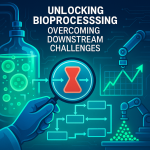🔍 Researchers emphasize the integration of various in-line and on-line techniques to tackle challenges in downstream processing.
⚗️ Notably, combining mid-infrared and Fourier transform spectroscopy improves measurement accuracy.
🎯 Techniques like near-infrared and Raman spectroscopy also support real-time monitoring, boosting efficiency in product release.
📈 Continuous advancements promise to optimize data integration for better outcomes.
Introduction:
The article discusses recent advancements in spectroscopy that enhance process analytical technology (PAT) in downstream biopharmaceutical manufacturing operations. Researchers emphasize the necessity of real-time product release systems and the ongoing shift toward continuous manufacturing within the industry, despite some challenges in implementing effective PAT solutions.
- There is a significant potential for intelligent manufacturing systems that allow for real-time product releases, enabled by advancements in process monitoring and analytical techniques.
- Although PAT has been recognized since 2004, its implementation in downstream processing remains limited due to challenges such as the complexity of therapeutic proteins and the need for immediate responses.
- Innovations in spectroscopy, particularly mid-infrared and near-infrared techniques, are reducing the barriers to effective in-line, on-line, and at-line analysis.
- Recent methods like surface-enhanced infrared absorption spectroscopy (SEIRA) and advanced variants of Raman spectroscopy are improving measurement sensitivity and enabling in situ monitoring.
- The integration and optimization of multiple analytical techniques are crucial for addressing the specificity and practicality needed for commercial-scale PAT.
Conclusion:
The advancements in spectroscopy and other analytical techniques represent a promising direction for enhancing PAT in downstream processing operations. While challenges remain in specificity and practical implementation, ongoing research and integration of these technologies are poised to facilitate significant improvements in biopharmaceutical manufacturing processes, thereby optimizing product quality and regulatory compliance.



